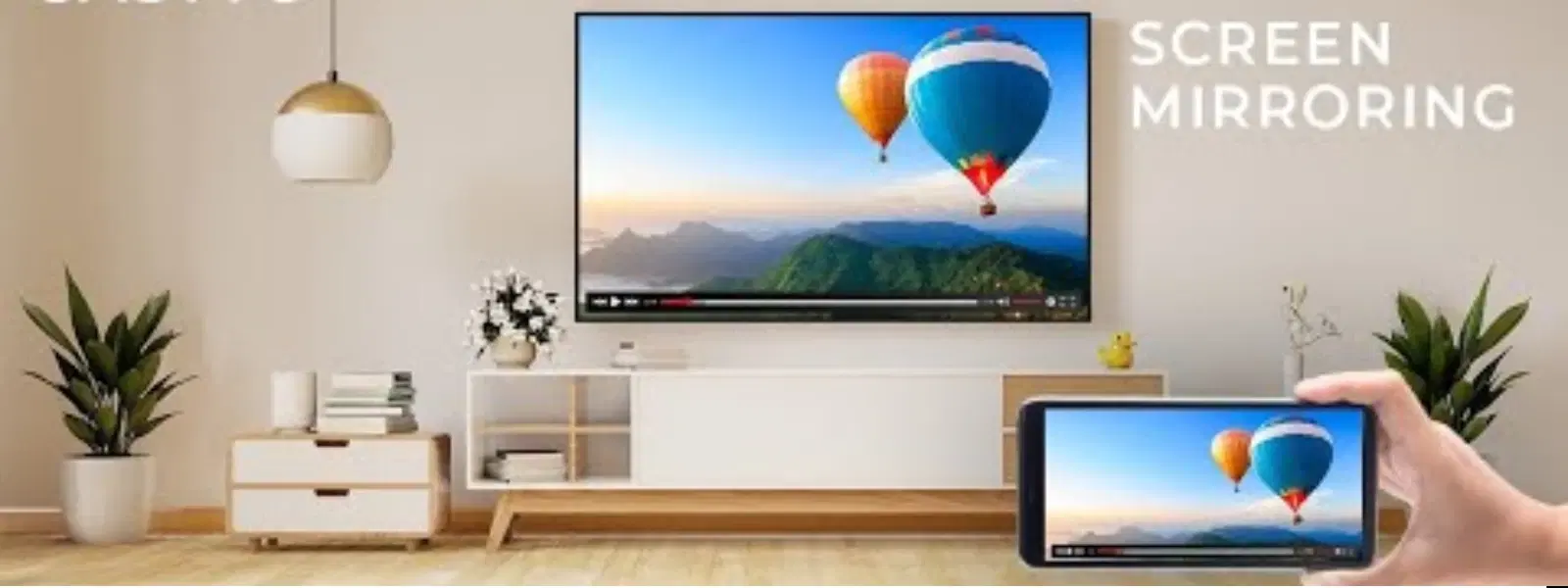
Consumer Electronics
•04 min read
Have you ever wanted to share your phone's screen on a non-smart TV but weren't sure how? This guide explains how to connect your phone to a non-smart TV using just a USB cable, ensuring you can easily transfer media and mirror your screen. Experience seamless shopping with Tata Neu, where you earn up to 5% NeuCoins on every purchase and enjoy express delivery for orders placed before 6pm.
A USB connection uses a cable to link your phone to your TV. This simple method allows for direct file transfer and, in some cases, screen mirroring without the need for a Wi-Fi network. It is a viable option for those who own non-smart TVs that still have USB ports. Whether you have an Android device or an iOS phone, understanding your device compatibility is key to a successful setup.
Connecting your phone to your TV via USB offers several benefits. You can easily transfer files, mirror your screen, or simply enjoy your media without depending on wireless networks. Compared with methods like HDMI connection or wireless casting, a USB connection is straightforward and often requires minimal setup.
Before you begin, determine if your TV has a USB port and what type it is. Your phone must also support screen mirroring or file transfer mode via USB. Consult your TV manual to confirm if USB file transfer also supports screen mirroring, as not all non-smart TVs offer this feature. This will ensure a smooth setup when you connect your devices.
Gather the essential items: a USB cable compatible with both your phone and TV, and if needed, adapters such as USB-C to HDMI or USB to RCA AV converters. Whether you use an Android or an iOS device, choose a cable that supports the necessary data transfer for your intended use.
Begin by plugging the USB cable into both your Android phone and your TV. Select the appropriate input option on your TV, such as 'USB' or 'File Transfer'. Then, on your phone, enable the file transfer mode or USB debugging to allow the device to communicate with the TV.
For iOS users, the process is similar. Connect your iPhone using a Lightning-to-USB cable or the designated adapter. Adjust the TV settings so that the USB input is recognised, and open the 'Photos' or 'Files' app to access your media.
This setup is perfect for a variety of needs. Enjoy viewing your photos and videos on a larger screen, listen to music, or use apps that support USB display. This easy method bridges the gap between the portability of your phone and the larger display of your TV.
If your phone does not connect, first check that the USB cable is functioning correctly and that both your phone and TV support the connection mode you are trying to use. Restarting both devices or testing with another cable can also help resolve the issue.
Often, the TV may be in file transfer mode rather than actual screen mirroring mode. This is because many TVs are designed to read files from storage devices rather than mirror screens. Verify that the TV's USB port supports video input, as many non-smart TVs only function as storage devices. Consider alternative methods, such as using a compatible USB adapter for HDMI or RCA connections, to achieve mirroring.
If you encounter video flickering, resolution issues, or audio problems, ensure the cable is correctly and securely connected. Checking your TV's settings and updating your phone's software may also resolve these common issues.
Pro Tip: Get the Most Out of Your USB Connection
Did you know that using USB adapters like MHL or SlimPort can enhance your connection capabilities? These adapters often support higher resolutions and extend compatibility with non-smart TVs. Always review your phone's specifications for supported adapters before making a purchase.
If your TV does not support screen mirroring via USB naturally, using adapters can provide an effective alternative. A USB-to-HDMI or USB-to-RCA adapter can help you mirror your phone's display seamlessly. Simply plug in the adapter, connect the necessary cables, and select the matching input on your TV to enjoy a clear display.
There are cases when a wired USB connection may not be ideal for your setup. In these situations, exploring wireless alternatives such as Bluetooth or trusted third-party dongles might be beneficial. However, bear in mind that a solid USB connection is usually the simplest and most reliable solution.
Ensure your USB cable is functional, your phone supports USB output, and your TV is set to the correct input mode.
You can use a USB cable or a USB-to-HDMI adapter to establish a wired connection for screen mirroring.
The type of cable depends on your phone, for instance, USB-C for Android or Lightning for iPhone, along with the compatibility with your TV's USB port.
Yes, if your phone supports USB screen mirroring or if you use an adapter such as MHL or SlimPort.
No, older TVs may not have USB ports or may not support video input via USB. Checking your TV's manual for compatibility can clarify this.
Connecting your phone to a non-smart TV via USB is a simple process that opens up a range of possibilities for sharing your content. By ensuring compatibility, gathering the right tools, and following the steps outlined in this guide, you can easily display photos, play videos, and mirror your phone's screen. Remember to troubleshoot any issues by verifying cable connections and device settings. Enjoy the convenience and versatility that a direct USB connection offers, and keep exploring more tips and insights in consumer electronics on our blog. Experience seamless shopping with Tata Neu, where you earn up to 5% NeuCoins on every purchase and enjoy express delivery for orders placed before 6pm.